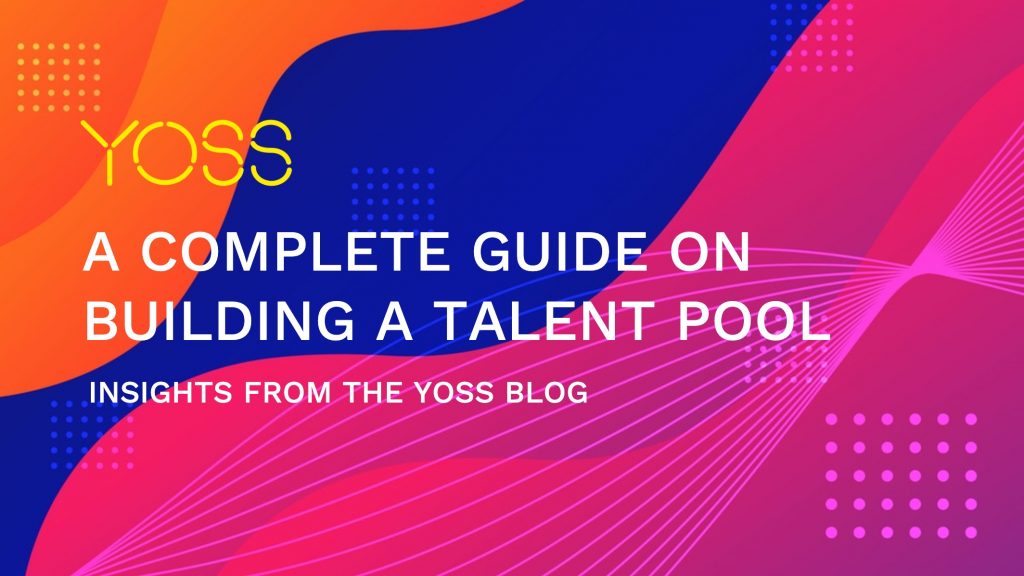This article was originally published by YOSS here.

What is a Talent Pool?
A talent pool is a database of contingent workers, their skills, and their availability. Using one greatly increases the power of your staffing efforts. For example, if you start a new project, you can quickly scale up your staff with proven talent. And after the project’s completion, you can just as quickly scale down. Normal hiring is reactive. A role needs to be filled so you look for someone to fill it. A talent pool is proactive. You find people who can fill roles that may need filling in the future. At first glance, building and maintaining a talent pool may seem like a waste of time. After all, you will be finding and vetting candidates for roles that may never need filling.
This is too simple a way of thinking about the hiring process. When you hire for a single position, you spend a lot of time considering candidates you won’t hire. Talent pools eliminate much of this waste.
In the long-run, talent pools more than pay for themselves by reducing cost-per-hire and increasing productivity and flexibility. But they still require a substantial and sustained commitment of resources, as well as a certain amount of disruption.
How a Talent Pool Works
The idea behind a talent pool is that it grants you access to contingent workers with all the skills you may need in the course of your business. These skills will often be ones that your permanent workforce lacks.
The benefits of talent pools can be seen immediately. Imagine that you want to create an iPhone app for a new promotion. You don’t have a mobile developer on staff, so you look in your talent pool and find one or more freelancers with the right skills with whom you’ve already developed relationships. Posting on a job board or through an agency may take weeks. With a talent pool, you can generally be up and running within days.
Creating the Infrastructure for a Talent Pool
Before you start the talent pool development process, you need to create a structure for it. It’s possible to create a limited talent pool for a particular part of your business, but most talent pools are created for the entire business. In these cases, the procurement department is normally structured around the talent pool.
This means that more of the effort of procurement staff will go toward building and maintaining the talent pool and less toward filling staffing requests. This may be discomfiting to existing staff and makes getting buy-in for the changes essential. Once the system is in place, staff should see that the work is the same—they are simply doing it in a more efficient way.
Building the Talent Pool
Building your talent pool can be broken up into three steps.
Step 1: Create the Talent Pool Infrastructure
The first step in building your talent pool is to create the infrastructure. You need to determine what skills your business needs and what skills it has. This is more difficult to determine than it may seem at first. You don’t just need to list the skills you currently use but also those skills that you may reasonably use in the future.
Start by looking at your business’ organization. Determine the type and level of work everyone does. By consulting with management and the workforce, you should be able to develop a complete list of the skills that your business needs. In fact, you may find skill gaps that your business may want to fill by expanding its permanent workforce.
Similarly, you need to determine your business’ future growth plans. In general, your management team should have a good idea about this. You will also need to consult with them about the kind of skills that will be necessary to accomplish these plans.
Finally, you need to list all of the skills that your current workforce possesses. Your talent pool can be used to “hire” internally when it makes sense.
Step 2: Set Up Processes to Support and Use the Talent Pool
The talent pool infrastructure developed in Step 1 must be constantly updated. Your business’s needs will change and workers will come and go. If the infrastructure doesn’t correctly match your company’s needs, the talent pool won’t work effectively for your staffing needs, regardless of how well you fill it.
You also need processes for finding and vetting talent. These must already be done by your company. It’s different here, however. Finding people to add to the talent pool is something that is constantly done based on overall company needs, not just your current staffing needs.
The other side of this requires that you create procedures for using the talent pool. There are two parts to this. First, there is the standard hiring process of onboarding. If you don’t have set procedures for onboarding contingent workers, now is the time to set them up because they will make your talent pool that much more useful.
The second part of using the talent pool is having a good interface to it. You could, theoretically, set up your talent pool in a spreadsheet. This will be difficult unless you have the smallest of businesses. Most companies use specialized software that includes talent management features. Alternately, a company that has a strong development team could create their own system.
Step 3: Fill Your Talent Pool With Great, Vetted Prospects
Once you have your talent pool infrastructure and processes set up, you get down to the real work of finding the talent your business needs. And once your talent pool is filled, you need to keep it filled.
There are a lot of places to find good people:
Job applicants: it’s often the case that a number of good people apply for a single permanent position. Many of these people would be open to doing freelance work for you.
Spec resumes: most businesses receive unsolicited resumes that don’t directly apply to your needs. That being said, some of these people may be appropriate for your talent pool.
Ex-employees: unless the separation precludes this, ex-employees can be a great source for talent. This is particularly true of people who leave due to retirement or because they’re starting their own businesses.
Online forums: it can be worth staying active on forums that cater to particular kinds of professionals, who can then become leads for your talent pool.
Internal connections: your workforce is a great resource for connections to other professionals.
Website: almost all businesses have a section of their websites devoted to hiring. Consider creating content that will attract the kinds of workers you are looking for.
Educational outreach: if you talk to people who are still in school or are otherwise training, you’re in a much better position to get them to work for you once they are in the job market.
The key to filling your talent pool is to follow the procedures that we discussed in Step 2. Also, keep looking for great people because your talent pool can always be better and deeper.
Summary
If you are looking to build or fill your talent pool, connect with YOSS. At YOSS, we represent the very best pre-vetted talent in the world. We only engage with the top 1 percent of talent. So whether you are looking to fill a particular position or to shore up your talent pool, we can help.
Our mission is to make agile staffing easy for companies like yours so see how YOSS can help you manage or add to your workforce below with YOSS Talent Pools.



